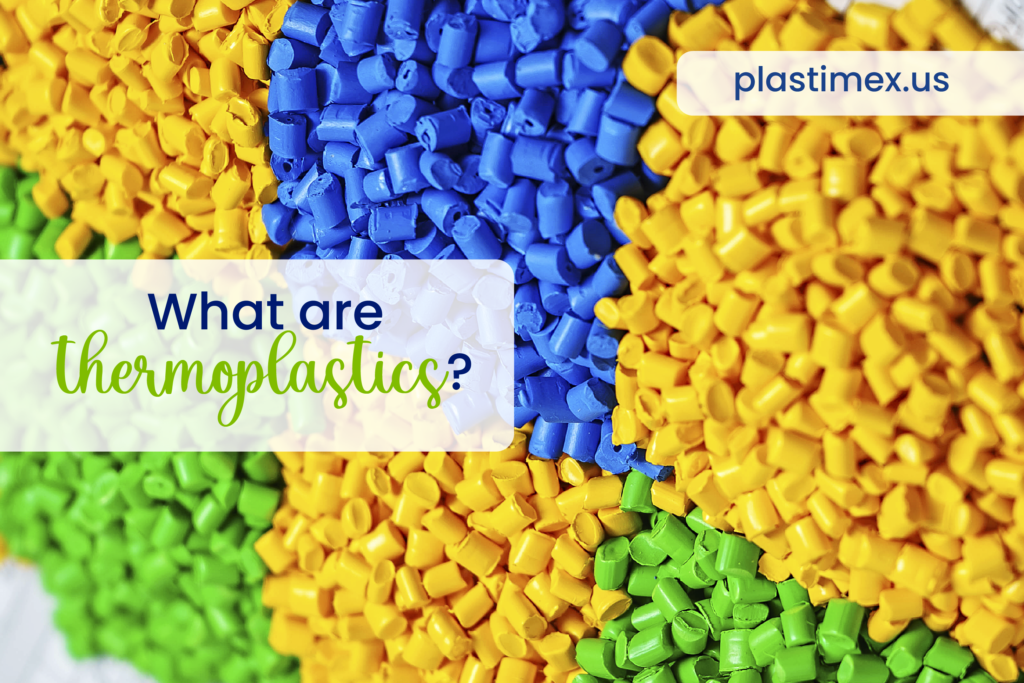Polymers are divided into two types: thermoplastics which are characterized by being flexible or deformable at high temperatures, so they can be melted and reformed several times to recycle the plastic; and thermosets, which are materials that are easy to mold at high temperatures, but cannot be re-melted because they burn, making it impossible to reincorporate them into the production line. For this reason, in the plastic industry thermoplastics are one of the main options when looking for a resistant and recyclable material. Learn everything you need to know about thermoplastics.
Did you know…?
Raw materials used to produce plastic are natural products such as coal, natural gas, salt, and oil. In addition, thanks to their different properties, they can be easily molded and adapted to create containers, bags, clothing, electrical appliances, toys, etc. Plastics can be divided into two groups according to their characteristics:
Thermostable: To mold this type of plastic it is essential to subject it to high temperatures. The properties offered by these thermosets are their durability, weight, and quality. However, it is important to mention that they only assume one form permanently, which makes recycling impossible.
Thermoplastics: This group is made up of linear and branched polymeric chains, so when exposed to heat they can be easily molded. One advantage is that they can be recycled without any inconvenience. The best-known thermoplastics are: HDPE, PP, PET, and PVC.
Differences Between Thermoplastics and Thermosets
As mentioned, the main difference between thermoplastics and thermosets lies in their behavior at elevated temperatures. While thermoplastic polymers can be reshaped and heated as many times as necessary, thermosets can only be reshaped once. Some of the main differences are:
- Thermosets take up to 5 minutes to harden, while thermoplastics take 10 seconds.
- Thermosets have high thermal and chemical resistance, while thermoplastics have high resistance and flexibility.
- Thermosets do not soften at elevated temperatures, while thermoplastics can be heated and molded multiple times, facilitating their recycling process.
Thermoplastic polymers in Plastimex
Polyethylene terephthalate (PET): Better known as PET by its English name (polyethylene terephthalate), it is one of the most used materials to mold plastic bottles and containers. This type of material is characterized by being crystalline, light, flexible, and very resistant. It is a linear polymer that can be processed in different ways for a large number of uses due to its multiple qualities.
High-density polyethylene (HDPE): It is a thermoplastic polymer. This type of material is obtained by addition, which means that different ethylene units are added for its composition. Rigidity and resistance are its main advantages. It is resistant to impacts, traction, and different temperatures. HDPE offers different industries the facility to print, paint and paste on it, which facilitates the customization of products.
Where can you obtain thermoplastic containers?
At Plastimex our priority at all times is to maintain a high-quality standard in each of our containers. Thanks to our innovative machinery and constantly updated staff, we offer the best bottles and caps for your product. If you want to know more about the variety of PET and HDPE containers we provide, contact an advisor for advice on the best way to contain your product.

